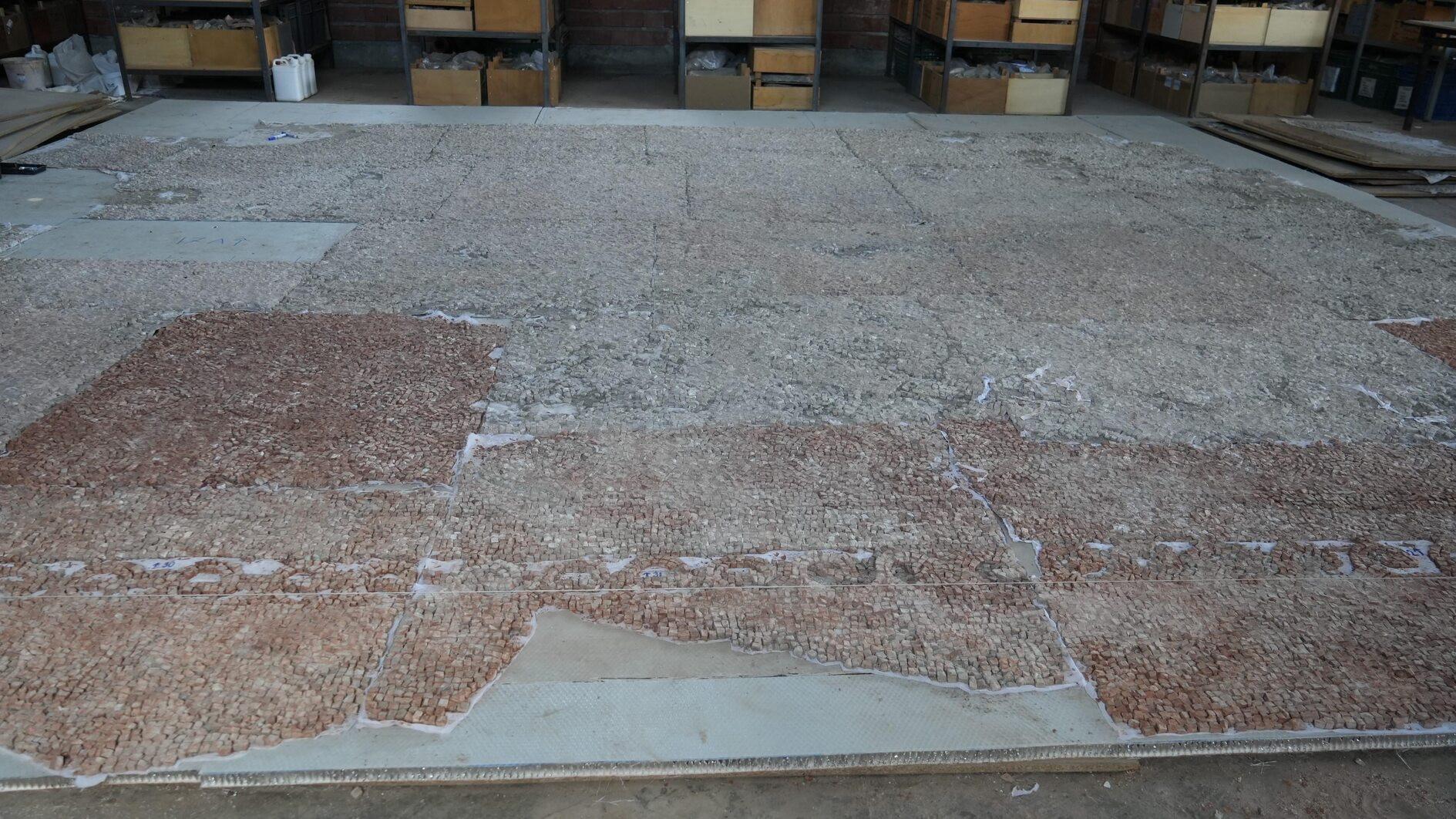
In the excavation work carried out in Pompeiopolis, located in the Taşköprü district of Kastamonu, which once served as the capital of Paphlagonia, the 1,800-year-old mosaics of a Roman villa are being saved and brought to light.
Pompeiopolis was one of the largest cities of the Paphlagonia region in terms of the area it covered during the Roman era. The excavations are being carried out under the leadership of Associate Professor Mevlüt Eliüşük, a faculty member of the Department of Archaeology at Karabük University.
This year's work is particularly focused on the villa section, aiming to uncover its mosaics. The Roman villa, covering approximately 1,600 square meters, has suffered severe damage due to a fire and soil shifts caused by water. The mosaic mortar, which has significant deterioration, is being carefully restored to prevent further loss. The ongoing excavations aim to unearth and preserve the mosaic, which was expected to completely disappear within a few years.
Providing information about the work on the mosaics, Eliüşük emphasized that Pompeipolis led the region as its capital in the 2nd century A.D. and said that due to this wealth, remains of structures from the Roman Empire are being discovered in the city.
He explained that the most significant structure in the city is the Roman villa, a massive building covering approximately 1,600 square meters with numerous private rooms. "There are also fountains inside, and connected infrastructure systems. Unfortunately, only the foundation level of the structure remains today," he added.
Eliüşük noted that important finds were uncovered in the villa, and among these, the mosaics stand out.
Eliüşük said that the mosaics will be reinstalled after conservation, adding, “Two teams are working on the excavations. The Italian team is working on the Roman villa. We are coordinating the villa and simultaneously conducting work at the theater. Some of our mosaics were unearthed from the Roman villa about 10 years ago. I have been leading the Pompeipolis excavations since 2002. Since then, we have tried to prioritize restoration alongside excavation as much as possible. In 2023, we uncovered a mosaic and completed its preservation. This year, we started the conservation of mosaics to make the villa visitable. The mosaics were removed and taken to the laboratory. After this removal phase, the mosaics will be conserved and then reinstalled.”
Eliüşük explained that the mosaic they restored is from the fifth century A.D. and mostly features geometric patterns.
“The floor mosaics reflect the fashion of that period, consisting of small, crafted colored stones forming various figures and patterns. Today, we use carpets, but in that period, geometric patterns resembling carpet designs were used. In restoration, we don't do any reconstruction or completion. We conserve it and put it back. Completing mosaics can be challenging because achieving the entire pattern or creating an image is difficult. Even the smallest application in this process can have negative results. That’s why we follow the method of removing, conserving and reinstalling without adding anything,” he said.
Eliüşük pointed out that there were severe deteriorations in the mosaics of the Roman villa, saying, “The main cause of this deterioration is the ground's instability. The hall where we removed the mosaics also suffered from a fire, which damaged the stones. Water also caused the mosaic to ripple. The mortar holding the mosaic lost its binding quality. If we hadn't intervened for another three-five years, the mosaic would have completely disappeared. That's why we prioritized the mosaic in our work. We may work on it for another three months.”